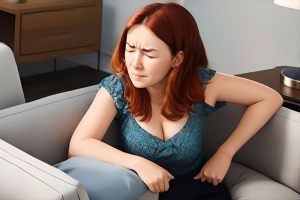ABCDE of Melanoma Detection: Identifying Early Signs and Seeking Medical Evaluation
Melanoma is a type of skin cancer that arises from the pigment-producing cells called melanocytes. Early detection of melanoma is crucial for successful treatment and improved outcomes. To aid in identifying potential signs of melanoma, healthcare professionals use the ABCDE Cancer Checklist. This article outlines the ABCDE criteria for melanoma detection and emphasizes the importance of seeking medical evaluation if any concerning changes are observed in existing moles.

Melanoma
Understanding the ABCDE Criteria
The ABCDE criteria serve as a guide for assessing changes in existing moles and identifying potential signs of melanoma. Each letter corresponds to a specific characteristic that healthcare professionals use to evaluate moles:
A. Asymmetry: Healthy moles are generally symmetrical, meaning one half of the mole mirrors the other half. In contrast, asymmetrical moles may have irregular shapes or borders, which can raise concerns for possible melanoma.
B. Border Irregularity: Melanomas often have uneven or jagged borders compared to regular moles, which typically have smooth and well-defined edges.
C. Color Variation: Normal moles usually have a uniform color, while melanomas may exhibit a mix of colors, such as shades of tan, brown, black, and sometimes red, blue, or white patches.
D. Diameter: The size of a mole is an important factor to consider. While melanomas are often larger than 0.25 inches (0.5 centimeters) in diameter, medical professionals have increasingly found smaller melanomas, underscoring the importance of vigilant monitoring.
E. Evolution: Moles that undergo significant changes in color, shape, or size may be indicative of melanoma. Additionally, moles that itch, hurt, or cause discomfort should be evaluated by a healthcare provider.

Importance of Early Detection
Early detection of melanoma is critical for successful treatment and can significantly improve patient outcomes. Prompt recognition and evaluation of suspicious moles can lead to timely interventions, reducing the risk of melanoma progression and metastasis.
Seeking Medical Evaluation
If any concerning changes are noticed in existing moles, individuals should seek immediate medical evaluation. Healthcare professionals, such as dermatologists, are trained to assess skin lesions and can conduct a comprehensive examination using the ABCDE criteria. If necessary, a skin biopsy may be performed to confirm the presence of melanoma.
Preventive Measures
While monitoring existing moles is essential, preventive measures can reduce the risk of developing melanoma. These include:
- Sun Protection: Limiting sun exposure, especially during peak hours, wearing protective clothing, and using sunscreen with a high sun protection factor (SPF) can minimize UV radiation exposure.
- Regular Skin Checks: Regularly inspecting the skin and moles for changes can facilitate early detection.
The ABCDE Cancer Checklist serves as a valuable tool for healthcare professionals and individuals to monitor existing moles and detect potential signs of melanoma. By promptly seeking medical evaluation and adopting preventive measures, individuals can play an active role in protecting their skin health and reducing the impact of melanoma.











